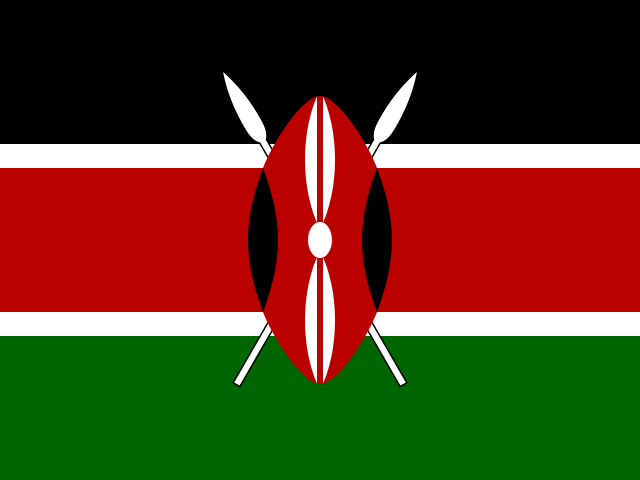
Kenya
Kenya’s media scene is characterised by a small number of privately owned groups, a state-funded public broadcaster, and widespread use of social media. Press freedom is enshrined in the constitution but is threatened by a combination of a hostile government and a prolonged economic downturn.
William Ruto’s election as president in August 2022 marked the start of a challenging time for the media, with politicians and officials showing little tolerance for reporting that is seen as overly critical of government policies. Senior figures, including the Deputy President and Cabinet Secretaries, have openly threatened independent media, resulting in the sacking of several prominent journalists and news managers.1 There has been economic pressure too. Early in its term, the government awarded the contract for carrying its weekly publication (MyGov) to just one newspaper, leading to suggestions it was looking to reward favourable coverage. More recently the government indicated that it would withdraw advertising from all independent media and direct them toward the state-run Kenya Broadcasting.
The situation is exacerbated because the country is going through an economic downturn that has affected the capacity of private media to operate sustainably. Given the importance of government advertising, it is often hard for media houses to withstand political pressure, and reports indicate that many have been pulling back from critical reporting or are operating a degree of self-censorship. Some newspapers, such as the Aga Khan-owned Nation, had to pull investigative pieces critical of the government due to pressure from the seemingly intolerant ruling party and its leadership. Despite this, more critical conversations are still happening online and via small news outlets or blogs whose audiences are growing.
Parts of the media in Kenya have recently come under malicious and damaging online attacks. Stories were spread on X falsely suggesting The Standard Group (SG) was about to close down or was insolvent2 and similar rumours were spread about Nation Media Group (NMG). The Nation claimed, in an editorial, that the attacks began immediately after the paper started running the ‘Broken System’ series, which reported on inefficiencies in government institutions, including the immigration department, Kenya Bureau of Standards, hospitals, and others.3
The financial strain on media organisations has worsened following years of COVID-19-related austerity measures, resulting in staff cuts, wage reductions, and limitations on content development. Journalists’ salaries have not been restored to pre-pandemic levels and even then, at some publications, the salaries are delayed for at least two or three months at a go and only released when journalists threaten industrial action. The print media have reduced their pagination to help them stay afloat, despite the challenges.
Few people are prepared to pay for online news in Kenya, but the Nation has been tightening its paywall after briefly dropping it during the recent elections. The paper operates a freemium model with generic news for free but with some opinion pieces by popular writers now behind the paywall. The paper is also publishing more ‘sponsored’ content as a way of shoring up its revenue. Some popular TV networks have also begun charging for news interviews online, with these developments seen as a necessary evil given the financial difficulties.
Traditional media houses also face competition online from digital-born websites such as Tuko.co.ke, which reaches around 70% of our online sample each week. Much of its content is focused on entertainment and gossip attracting a younger audience. Tuko.co.ke also has a reputation for breaking and frequently updated news, which many older outlets struggle to match.
Meanwhile, social media experienced the most significant increase by 5 points to 77%, with YouTube and TikTok showing an increase in their use for news. YouTube grew by 8% to 59%, while TikTok grew by 7% to 36%. Even though Facebook remained stable, it is still the most popular social network for news along with WhatsApp (60%) – both owned by Meta. X is the biggest loser, with a decline of 3% from the previous year to 37%.
Kenyans’ heavy use of different social and video platforms is raising concerns at the highest levels, with a particular focus on TikTok. A petition to Parliament recently called for an outright ban, describing the app as ‘a serious threat’ after it said the platform had been used to promote violence, explicit content, and offensive behaviour. TikTok’s popularity with young people and businesses means that government is likely to opt for stronger regulation, rather than outlawing the app completely.4
Catherine Gicheru
ICFJ Fellow and Director, Africa Women Journalism Project
George Nyabuga
Associate Dean and Associate Professor of Media and Journalism, Aga Khan University’s Graduate School of Media and Communications
Methodology note
These data are based on an online survey of mainly English-speaking, online news users in Kenya – a subset of a larger, more diverse, media market. Respondents were generally more affluent, younger (18–50 only), have higher levels of formal education, and are more likely to live in cities than the overall Kenyan population. Findings should not be taken to be nationally representative.
Trust in news overall
64%
2/47
Overall trust in the news (64%) is relatively high compared with other countries in our survey. Many of the most popular commercial brands such as Citizen, NTV, KTN, and the Daily Nation are trusted by around 90% of our sample. This is a reflection of the independent reputation of most Kenyan media, despite growing economic and political pressures.

